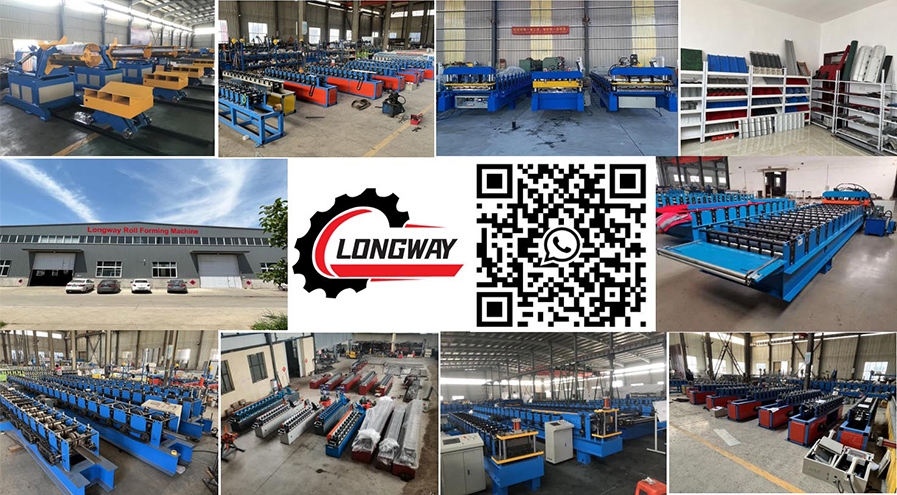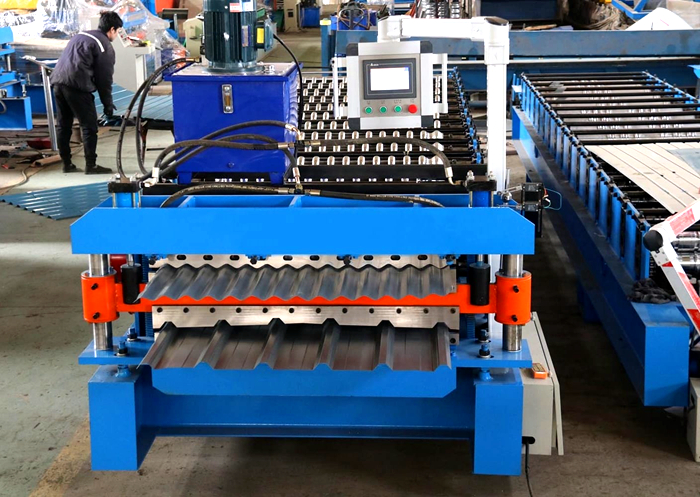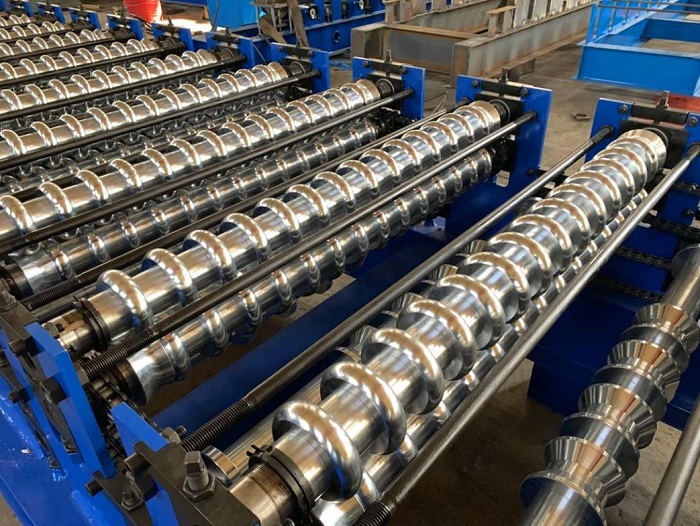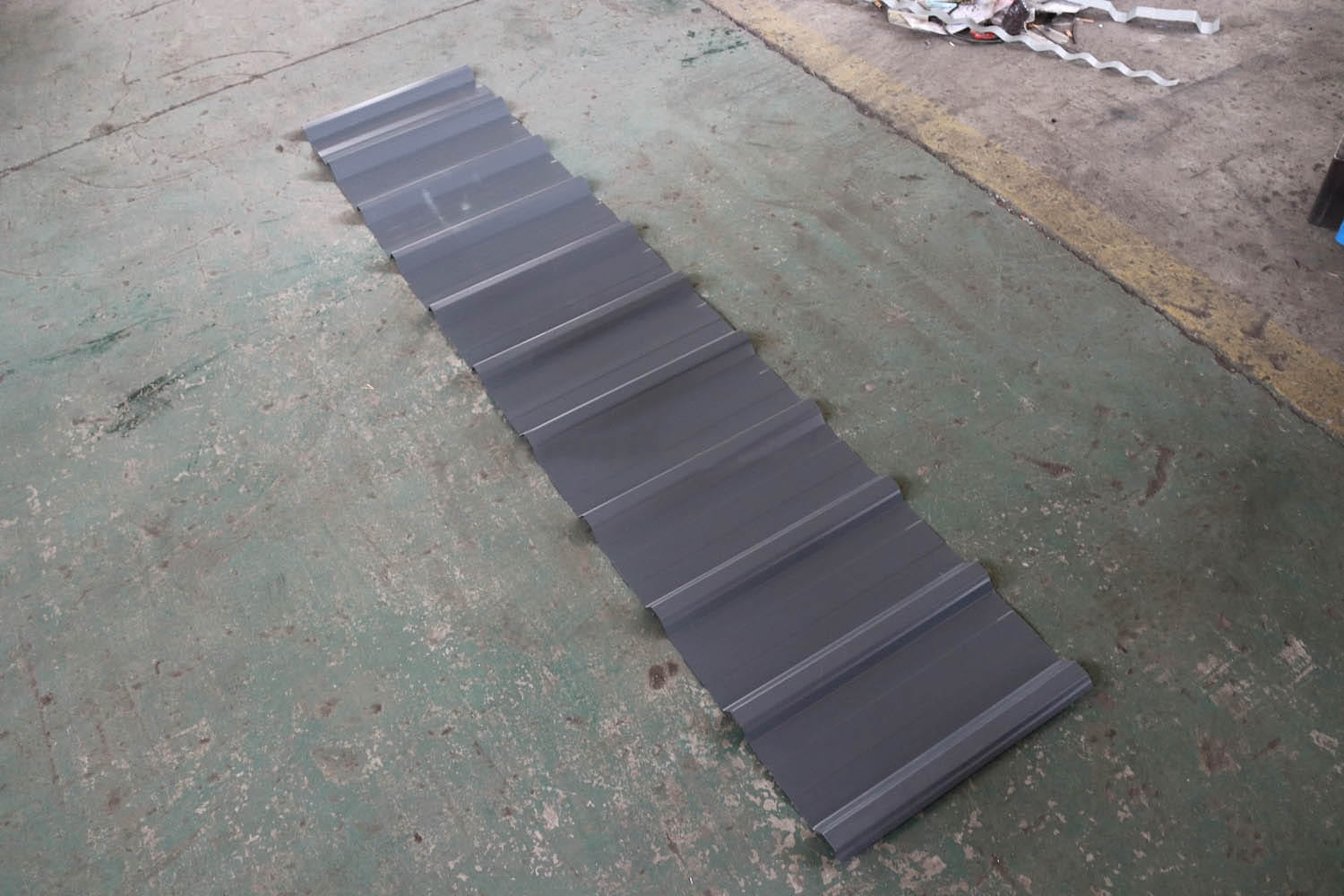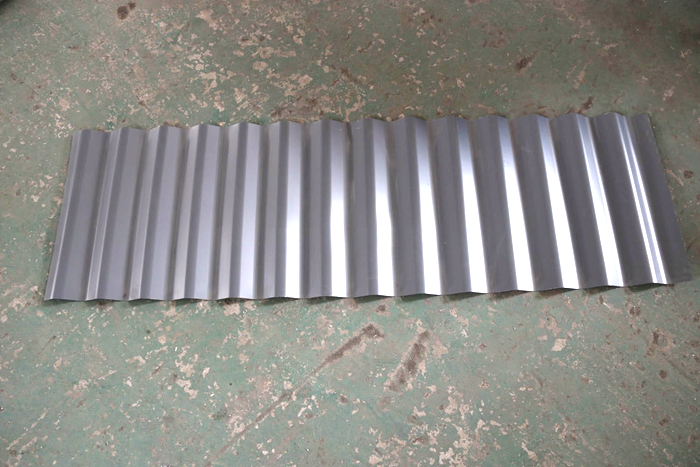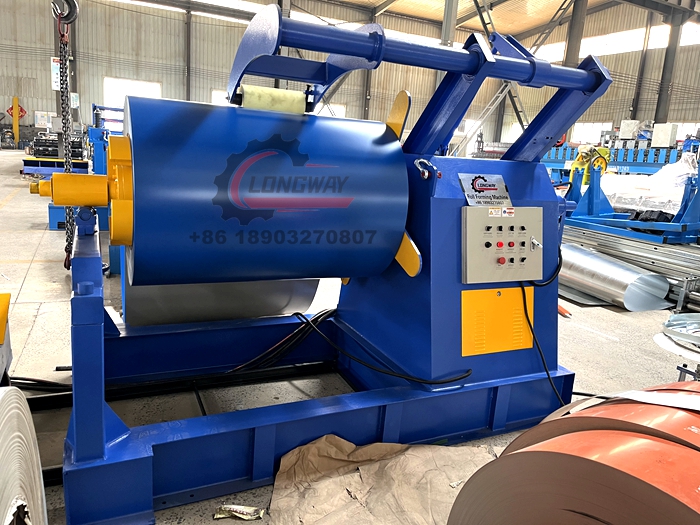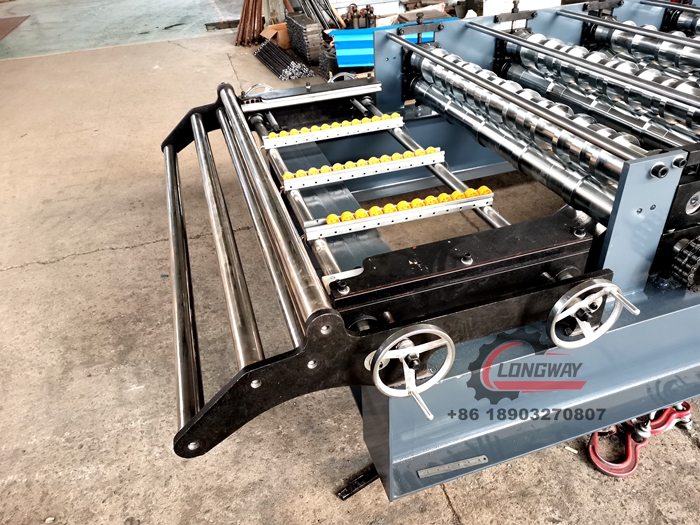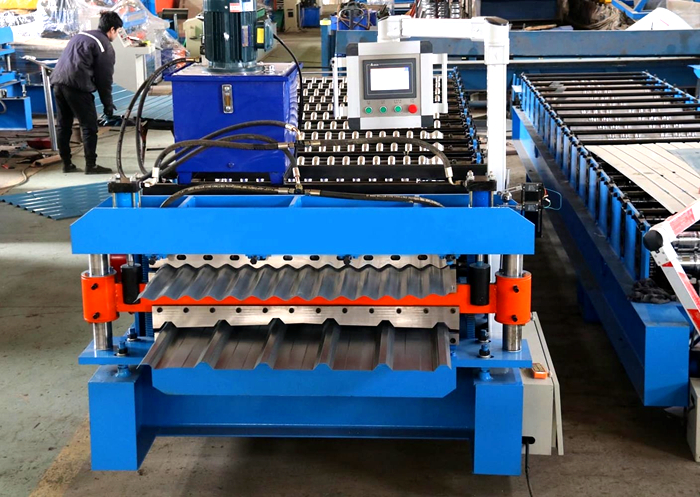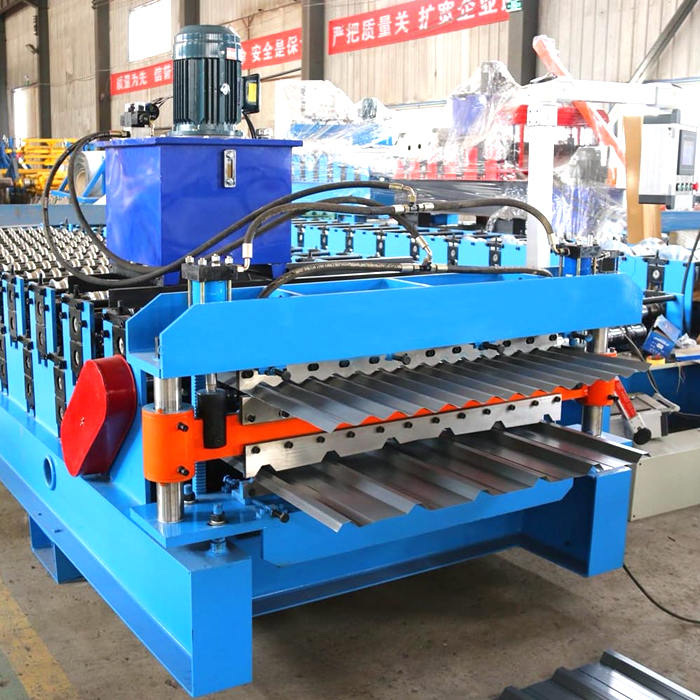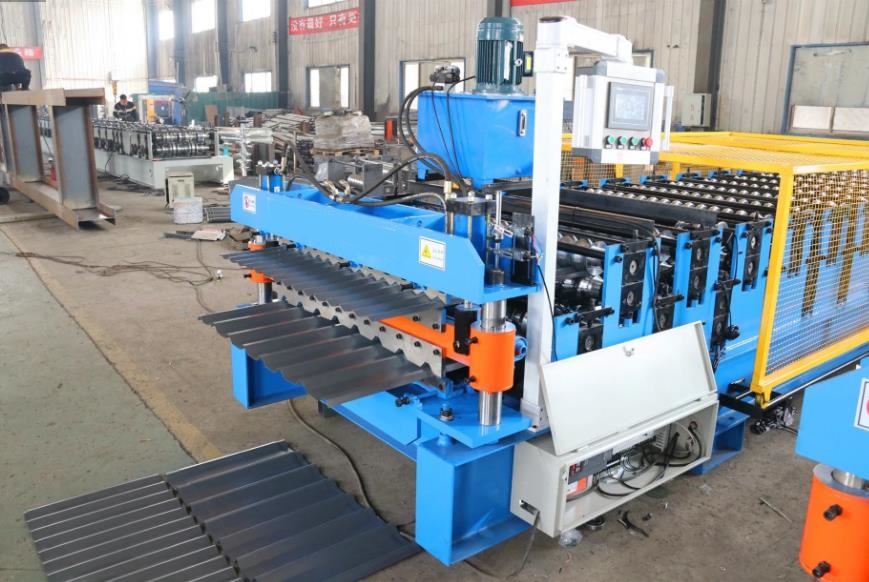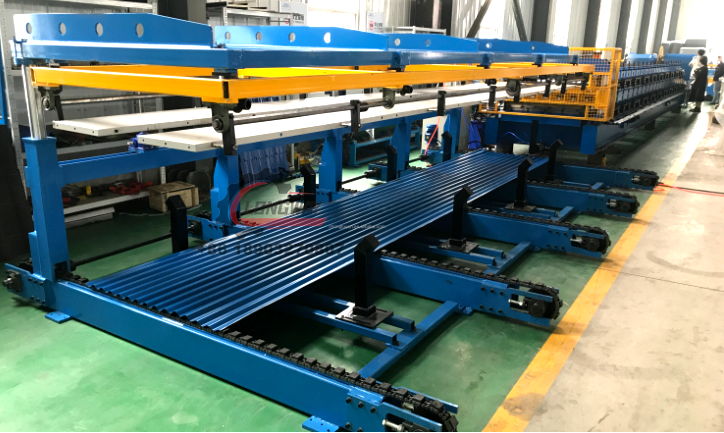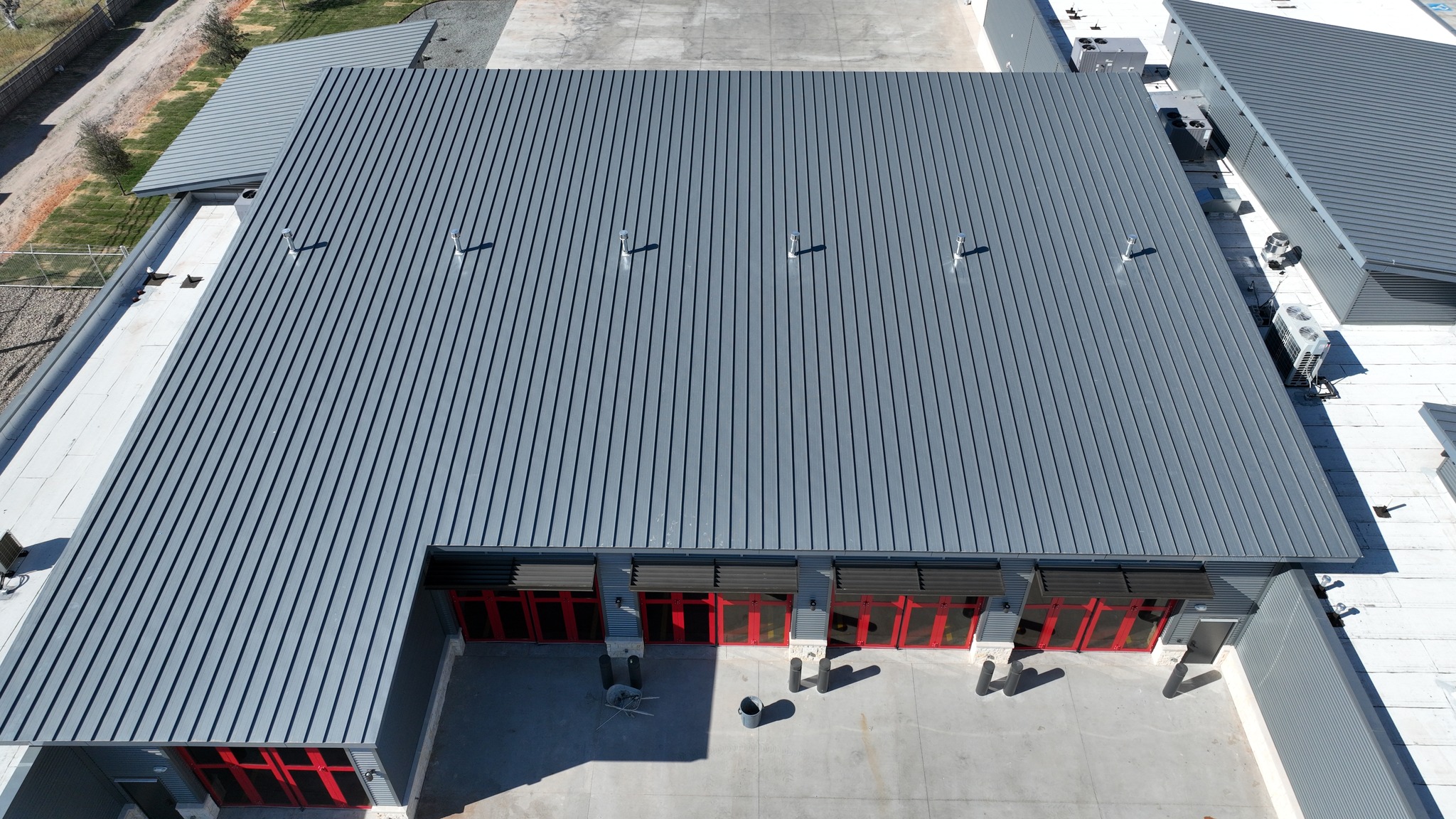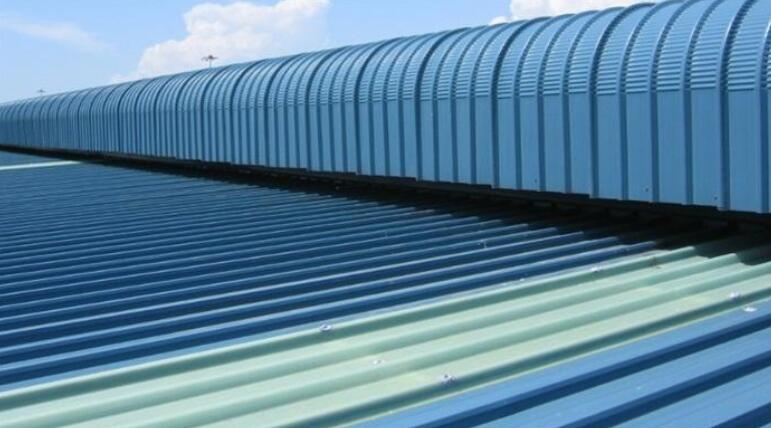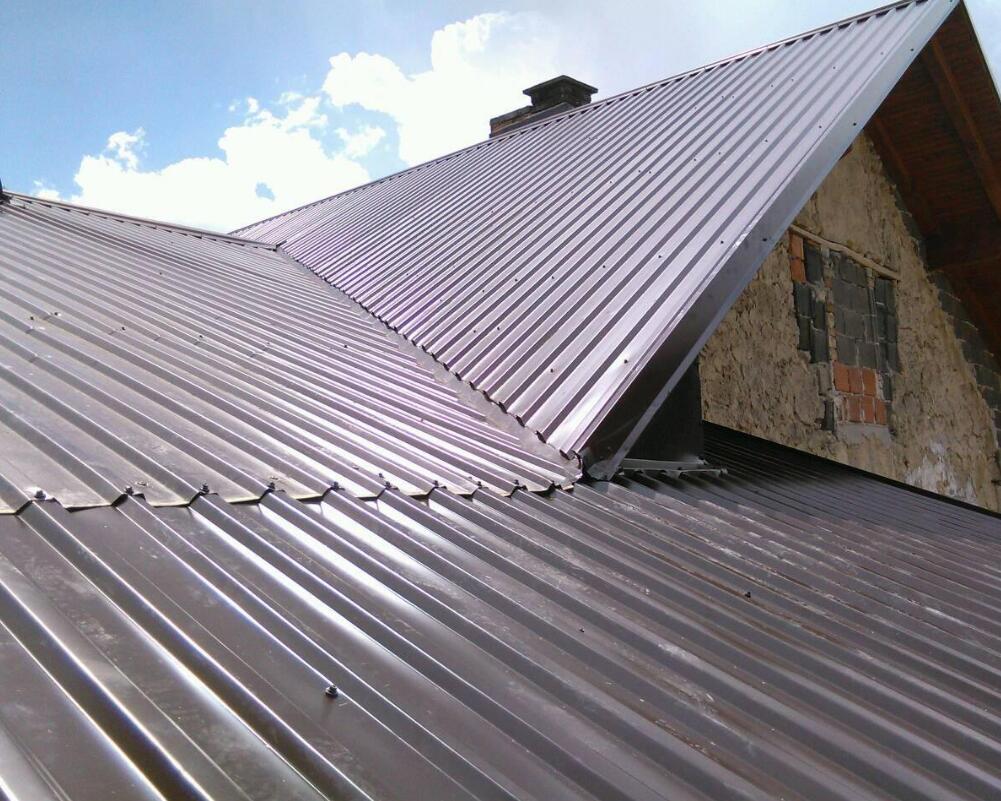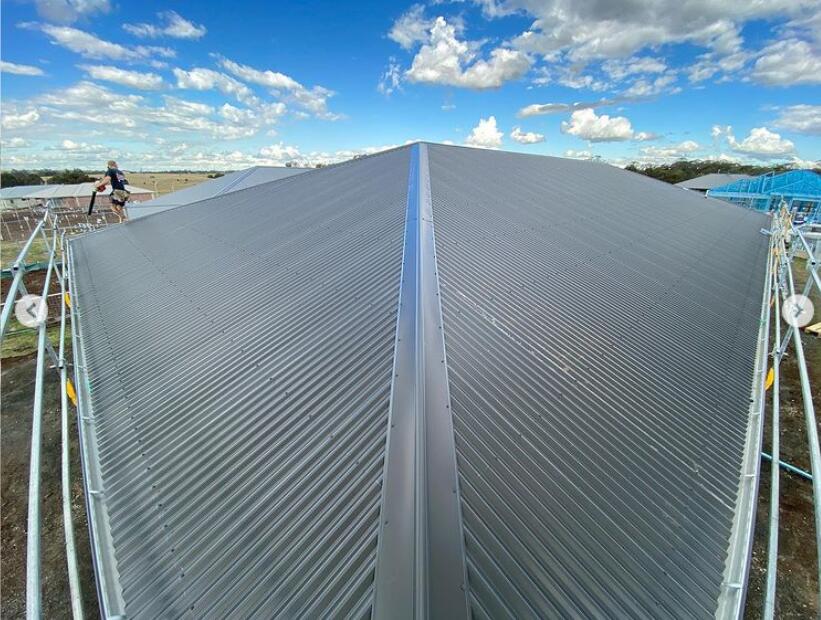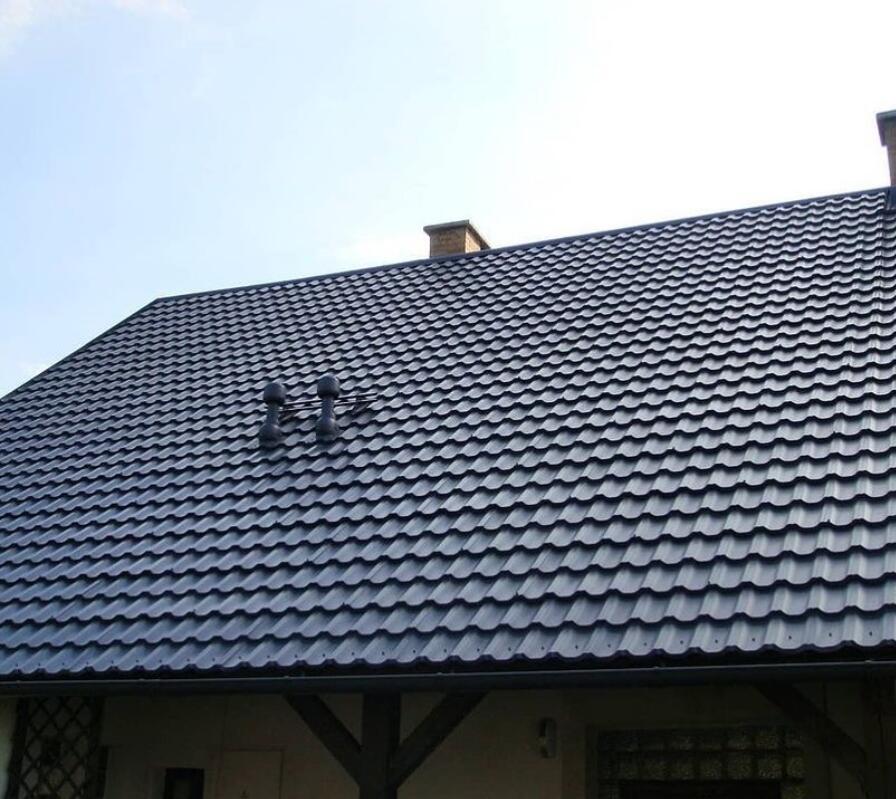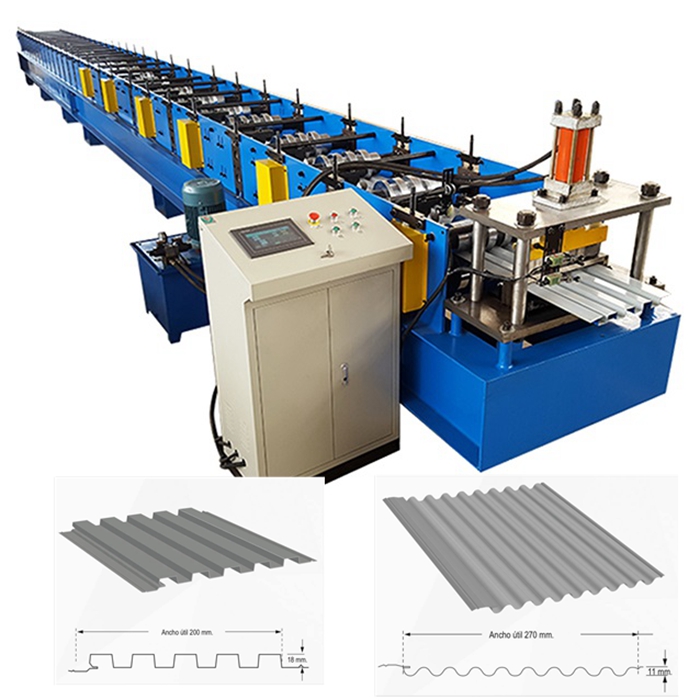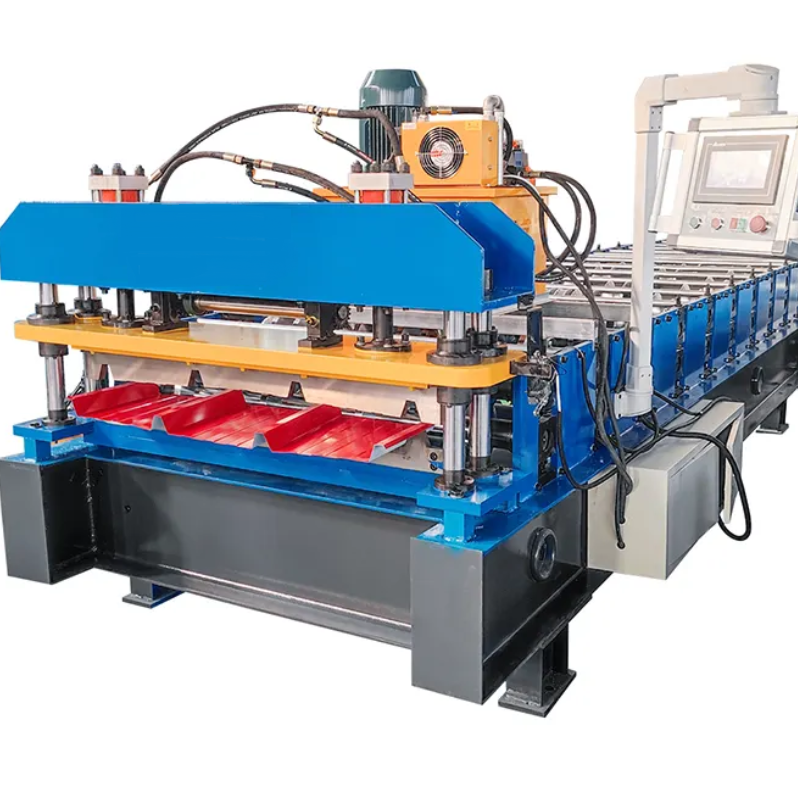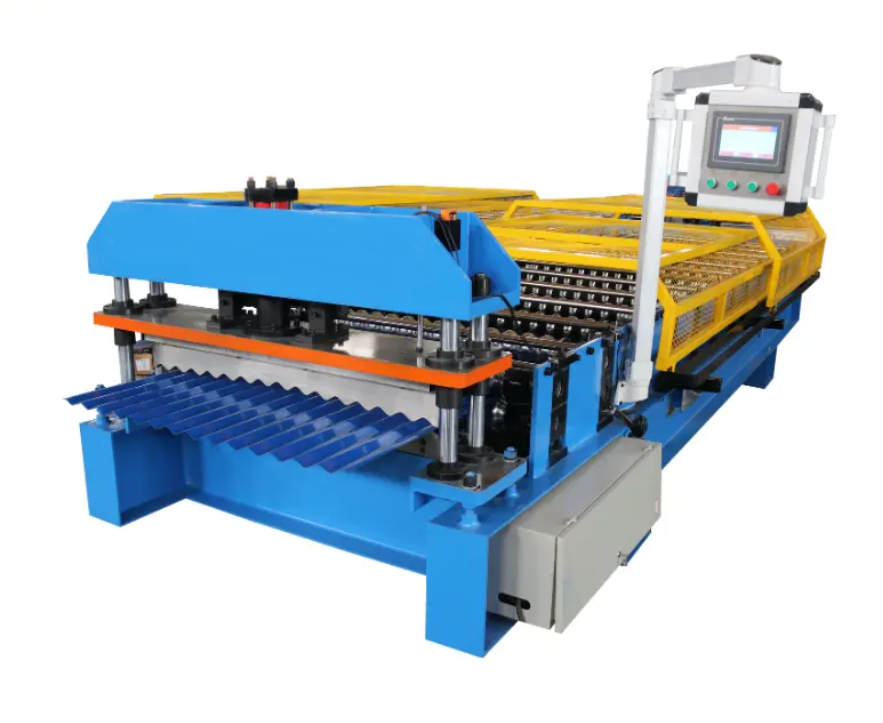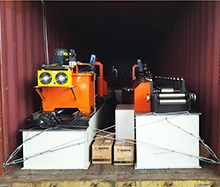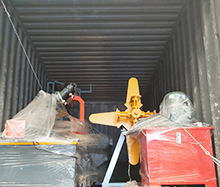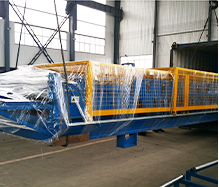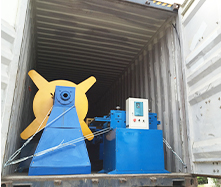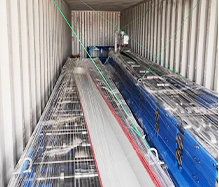détails du produit
Double Layer Roll Forming Machine Introduction
Double layer roll forming machine, also called double deck roll forming machine .
With 2 layers of guiding tables and the roll forming and machine à couper à longueur, double layer roll forming machines can produce two different roofing sheets with high efficiency. Generally speaking, double layer forming machine holds the following characteristics:
Changement simple et rapide entre 2 profils : fonctionnement sur écran automate, pas besoin de changer ou de régler l'outillage des galets.
Saving space and cost for the users.
Vitesse de production : 10/20/30 m/min en option.
Dessin de profil pour référence :
Roofing sheet has many different shapes. Usually different countries have their own popular design. As a roll forming equipment manufacturer, we can customize the double deck roll forming machine as customers’ demand. This double layer forming machine can work two different profiles.
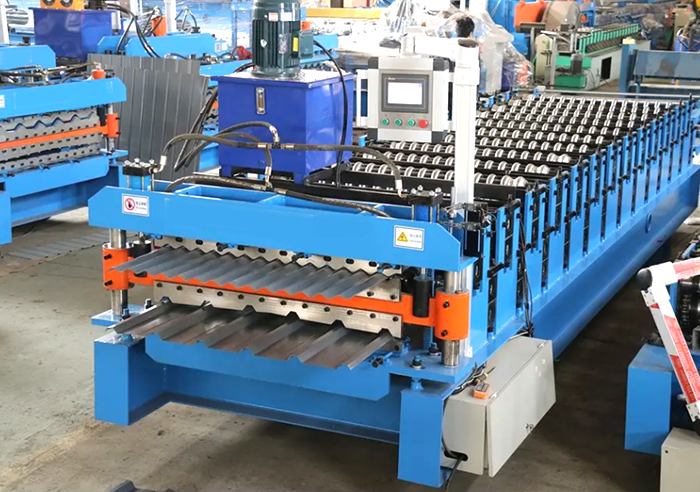
Dessin de profil pour référence :
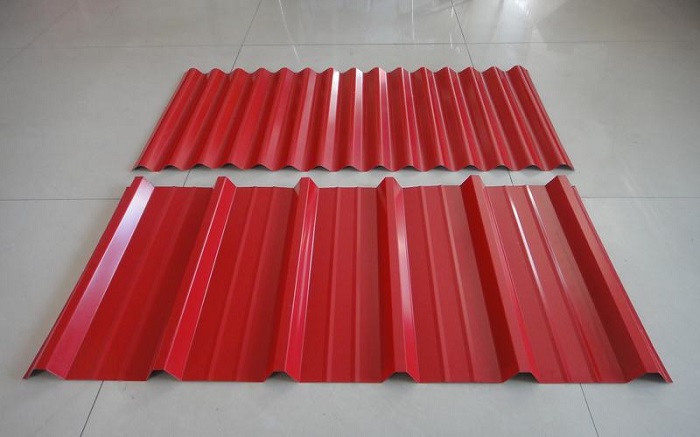
Double Layer Roll Forming Machine Working Process
Feeding: Metal coils are loaded onto the double layer roll forming machine. These coils can be made of various metals such as steel, aluminum, or copper.
Roll Forming: The metal coils pass through a series of rollers, each set of rollers responsible for shaping the metal into the desired profile. In a double deck roll forming machine, there are typically two sets of rollers, each forming a different profile.
Cutting: Once the metal has been formed into the desired shapes, it is cut to the required length by a cutting mechanism integrated into the machine.
Stacking or Collecting: The finished metal profiles are then either stacked for further processing or collected for packaging and shipping.
These double layer forming machines are used in various industries where there is a need for mass production of metal components with different profiles. Applications include roofing, wall cladding, automotive parts, and many others.
Double Layer Roll Forming Machine Applications
A double layer forming machine has a wide range of applications across various industries where there is a need for mass production of metal components with different profiles.
1. Roofing and Cladding: Double layer forming machines are extensively used in the construction industry for manufacturing metal roofing sheets and wall cladding panels. These machines can produce different profiles simultaneously, allowing for customization and versatility in design.
2. Automotive Industry: In the automotive sector, double layer forming machines are used to produce various components such as body panels, chassis parts, and trim pieces. The ability to form multiple layers simultaneously enables the efficient production of complex shapes required in vehicle manufacturing.
3. Furniture and Appliances: Metal components used in furniture and appliances, such as cabinets, shelves, and enclosures, can be manufactured using double layer forming machines. These double layer roll forming machines offer high precision and repeatability, making them suitable for producing components with tight tolerances.
4. Storage Systems: Double deck rool forming machines are employed in the fabrication of storage systems like shelving units, racks, and pallets used in warehouses, distribution centers, and retail stores.
5. Solar Panel Mounting Structures: With the growing demand for renewable energy solutions, double layer forming machines are utilized to manufacture mounting structures for solar panels. These structures require precise profiles to ensure optimal performance and durability, which can be achieved efficiently with such machines.
6. Agricultural Equipment: Components for agricultural machinery such as grain bins, silos, and equipment enclosures can be produced using double layer roll forming machines. These machines enable manufacturers to efficiently produce durable and weather-resistant components essential for agricultural operations.
Faramètres techniques
Processus de travail
Déroulage → Alimentation du matériau dans la machine → Profilage → Découpe hydraulique → Table de réception des produits

|
Matière première |
Type de bobine |
PPGI, PPGL, IG |
|
Largeur |
1000/1200/1220mm |
|
|
Gamme d'épaisseur |
Calibre 29-22 (0,3-0,6 mm) |
|
|
Puissance requise
|
Tension |
380v/3ph/50hz (personnalisé) |
|
Puissance du moteur principal |
5.5kw |
|
|
Puissance de coupe |
4kw |
|
|
Vitesse de formage |
15-20m/min |
|
|
Châssis de la machine |
Structure de poutre en H de 350 mm |
|
|
Épaisseur de structure |
Plaque de support intermédiaire en acier soudé de 18 mm |
|
|
Arbre de formage |
Arbre plein de 75 mm avec traitement thermique |
|
|
Matériau des rouleaux |
Acier forgé de haute qualité 45 # |
|
|
Postes de formage |
14-18 rangées Type de roulement : concept de conception de roulement séparé, il peut libérer les contraintes internes des pieds, puis la feuille sera en bonne forme et de haute précision. |
|
|
Voie de transmission |
Entraînement par chaîne 1 pouce (double chaîne) |
|
|
Type de coupe |
Type de pilier hydraulique et coupe en longueur |
|
|
Système de contrôle |
Delta automate et delta onduleur |
|
|
Filtrer |
Écran tactile |
|
|
Dimension (environ) |
8.8m×1.5m×1.2m |
|
|
Poids total (environ) |
7.6T |
|
Images détaillées de la machine
Chaque composant peut être conçu selon les besoins personnalisés. La machine de formage de rouleaux Longway fournit OEM/ODM pour tous les clients
Applications
Applications de la machine de formage de panneaux de toit
Cette série de profilés est conçue pour être des panneaux de toiture économiques pour les projets résidentiels, industriels et commerciaux.
Un minimum de 0,30 mm et un maximum de 0,7 mm donne plus de résistance aux dommages.
Appareils associés
LONGWAY précieux client
-

Chili
-
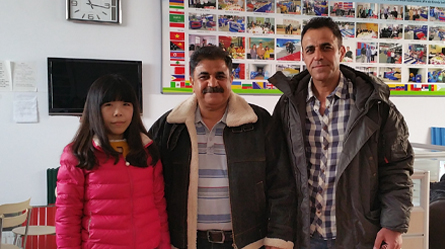
lran
-
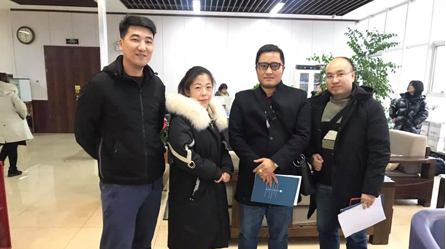
Philippine
-
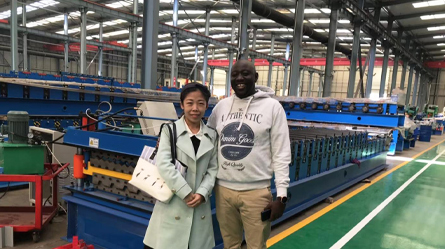
Afrique du Sud
Colis et livraison
1. Pulvérisation d'huile anticorrosion sur les rouleaux pour empêcher l'oxydation des rouleaux pendant l'expédition
2. Machine entière de film d'isolation d'emballage pour empêcher l'oxydation de machine pendant l'expédition
3. Planification de l'espace raisonnable pour réduire les coûts de transport pour les clients
4. Fixé bien pour éviter d'endommager la machine pendant la période de transit
Affichage d'usine
